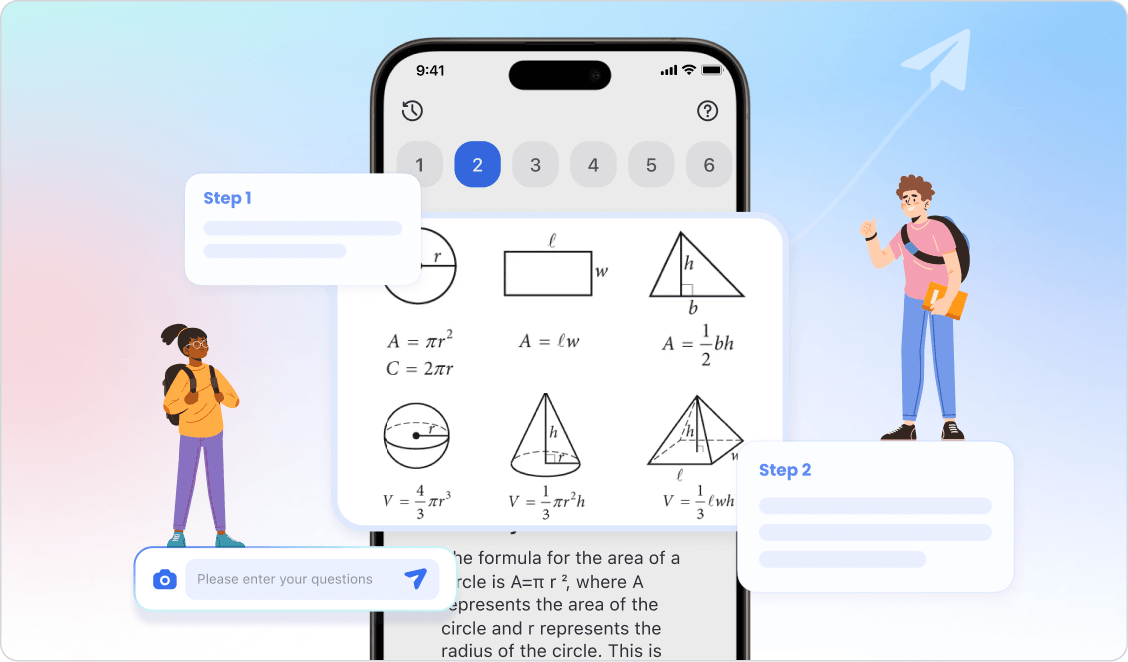Anthropic Launches Claude 3.7 Sonnet With Enhanced Reasoning

Anthropic's latest and smartest AI model, Copy.aiClaude 3.7 Sonnet, has reached a remarkable 70.3% performance on SWE-bench Verified coding tasks. This revolutionary AI brings a first-of-its-kind hybrid reasoning system that lets users choose between quick responses and detailed step-by-step thinking. The model proves more dependable for complex tasks with a 45% drop in unnecessary refusals compared to earlier versions.
Claude 3.7 Sonnet's capabilities now extend to 128K token outputs and users can access it through Amazon Bedrock. Developers and businesses can utilize this powerful tool effectively. Healthcare and financial service providers of all sizes benefit from the model's problem-solving abilities that combine speed with precision. Organizations can exploit this advanced AI solution for groundbreaking applications with flexible pricing at $3 per million input tokens and $15 per million output tokens.
In this article:
Unblocked Claude 3.7 Sonnet Now
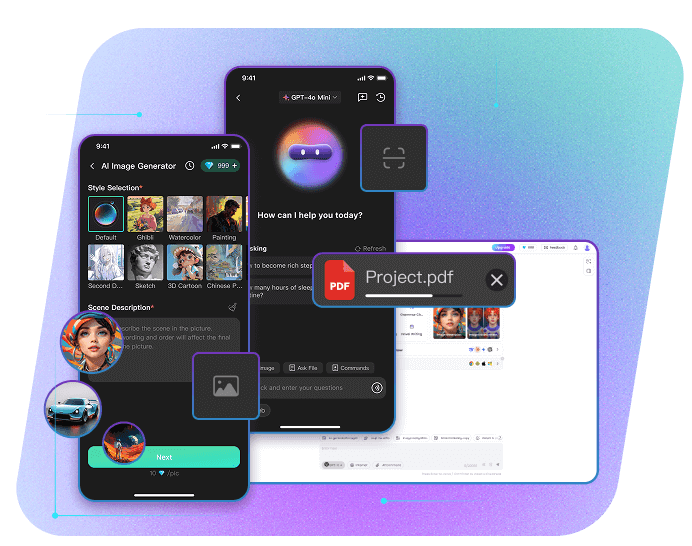
ChatArt - The best AI chat, AI writing, and marketing assistant
5,323,556 users have tried it for free
- Supported models: OpenAI o1-preview, o1-mini, GPT-4o, Claude 3.5 Sonnet, Gemini 1.5 Pro, etc.
- The AI writing generator creates high-quality and smooth articles, blogs, papers, and more with just one click.
- Over 100 writing templates available, supporting text export in multiple languages.
- The professional AI marketing SEO writing assistant takes care of everything from marketing copy and e-commerce writing to slogans, emails, and brand building—all in one place.
- Grammar checker and bypass AI detector help create 100% original text content, fully freeing up your writing inspiration!
Anthropic Unveils Revolutionary Hybrid Reasoning in Claude 3.7 Sonnet
Anthropic has made a breakthrough with Claude 3.7 Sonnet's hybrid reasoning capabilities. This new model merges quick responses with methodical analysis, which marks a major step forward in AI technology.
How Standard and Extended Thinking Modes Transform AI Interactions
The model works in two distinct modes - standard and extended thinking. Standard mode gives quick answers for everyday tasks, while extended thinking mode lets Claude break down problems step-by-step and show users its reasoning process. Users can switch between these modes based on what they need.
Extended thinking mode works best for:
• Complex financial and legal analysis
• AdvancedSTEM problem-solving
• Processing extensive data inputs
• Detailed creative tasks that need structured planning
The Technical Architecture Behind Hybrid Reasoning
Claude 3.7 Sonnet's technical core uses serial test-time compute, which makes accuracy better logarithmically based on thinking tokens. The model scored an impressive 84.8% on GPQA tests and hit 96.5% in physics by using parallel test-time compute scaling and a 64k-token thinking budget.
Beta testing shows the architecture can handle outputs up to 128K tokens, which gives plenty of room for detailed analysis. Developers can fine-tune the model's reasoning process through an adjustable thinking budget to balance speed, cost, and performance.
Why Anthropic Chose a Unified Model Approach
Anthropic built a unified model because they believe reasoning should be built-in rather than separate. This matches how human brains work - using one system for both quick thoughts and deep thinking. Users get a more natural experience because they don't need different models for different tasks.
The model shows its strength in many applications. Standard mode works like an upgraded Claude 3.5 Sonnet, while extended thinking mode adds self-reflection that improves math, physics, instruction-following, and coding Businesses find this helpful because they don't need multiple specialized models.
Testing confirms this approach works well. Cursor reports that Claude performs better in real-life coding tasks, and Cognition highlights its improved ability to plan code changes and handle full-stack updates. Vercel points out the model's accuracy in complex agent workflows, and Replit has used it to build sophisticated web applications from scratch.
The visible thinking process is a vital innovation that brings unprecedented transparency to AI decision-making. Users can watch Claude's step-by-step reasoning as it happens, which builds trust and lets them check its logic. Researchers can also spot differences between internal reasoning and external outputs, which helps create more reliable AI systems.
Claude 3.7 Sonnet Demonstrates Unprecedented Coding Capabilities
Recent standards show Claude 3.7 Sonnet's outstanding performance in software development tasks. These results set new benchmarks for AI-powered coding.
How Claude 3.7 Achieves State-of-the-Art Performance on SWE-bench
Claude scored an impressive 70.3% on SWE-bench, well ahead of OpenAI's o1 (48.9%) and DeepSeek-R1 (49.2%). This standard tests how well AI can solve real GitHub issues by itself. The test covered 2,294 Issue-Pull Request pairs from 12 popular Python repositories.
A developer showed the model's strength by turning a complex 4,269-line JavaScript application into Vue 3 during one chat session. The changes included:
• Building proper component structure
• Adding Pinia stores
• Setting up Vue Router
• Keeping drag-and-drop features working
• Preserving all features and user experience

Front-End Web Development Breakthroughs
Claude 3.7 Sonnet has taken big steps forward in front-end development. The model knows how to create and optimize user interfaces better than ever. It excels at:
1. Creating HTML, CSS, and JavaScript code automatically
2. Making design elements better based on how users interact
3. Keeping everything consistent on different platforms and screens
4. Building responsive layouts without human help
Big tech companies have tested and confirmed these improvements. Cursor praised Claude's skill with complex code and advanced tools. Vercel highlighted its accuracy in handling sophisticated agent workflows. This helped Replit build complex web applications from scratch.
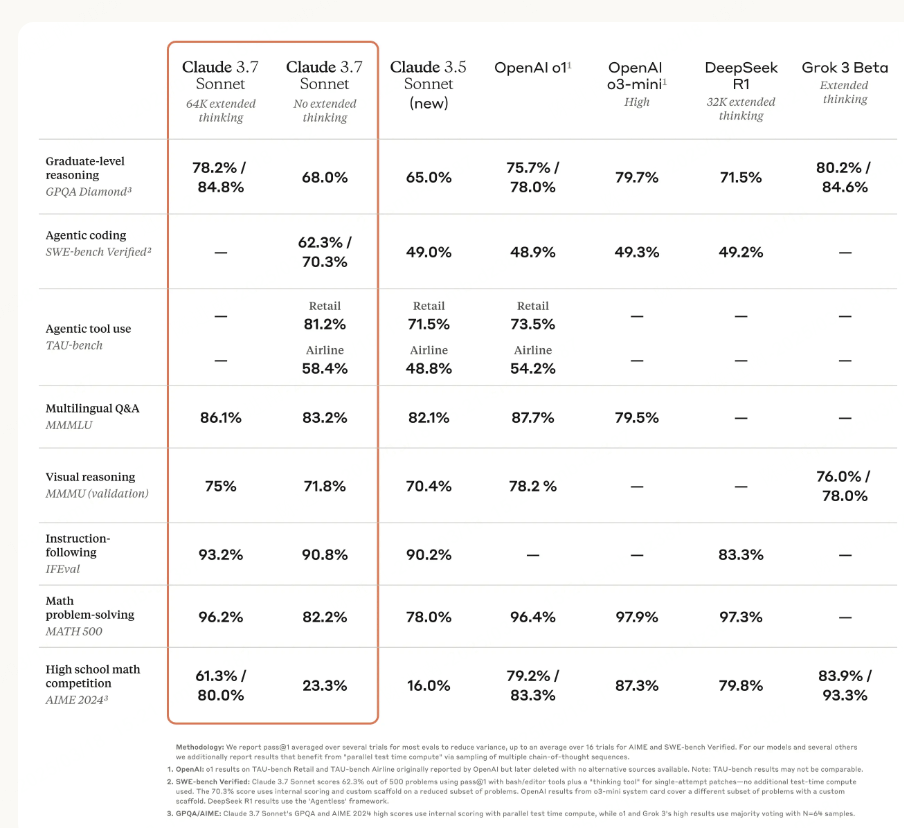
Claude does much more than simple coding tasks. Canva's tests showed it creates production-ready code with great design sense and few errors. The model understands personal, work, and open-source projects deeply. This makes it a great partner for:
• Fixing bugs across repositories
• Building new features
• Creating documentation
• Managing GitHub projects
Claude 3.7 Sonnet has simplified many parts of web development. The model studies design guidelines and applies them throughout development. This gives you consistent:
• Layout implementation
• Color schemes
• Typography
• Cross-platform compatibility
Companies find these features valuable to stay ahead in digital development. The model spots and fixes potential problems early, which simplifies development. This leads to faster project completion and lower costs through automated tasks and fewer errors.
Extended Thinking Mode Transforms Complex Problem Solving
Claude 3.7 Sonnet's extended thinking mode marks a new chapter in AI's problem-solving abilities. This innovative feature lets the model tackle complex challenges by using extra computational resources during inference time.
How the Adjustable Reasoning Budget Works
A token-based system forms the core of the model's reasoning budget, giving developers precise control over computational resources. The system can use up to 128,000 tokens for detailed thinking processes. This allows Claude to:
• Break down complex problems step by step
• Create detailed solution plans
• Look at multiple approaches at once
• Check and improve responses before sharing them
Organizations can match performance to task complexity with this flexible resource system. The accuracy improves logarithmically as thinking tokens increase, which shows efficient use of computational power.
When to Deploy Extended Thinking vs. Standard Mode
Extended thinking mode shines brightest on tasks that need high precision and detailed analysis. The model performs exceptionally well in:
• Mathematical calculations and proofs
• Physics problems with 96.5% accuracy
• Competition-level coding challenges
• Detailed technical analysis
Simple tasks like information requests and general writing work better with standard mode. This two-mode system lets organizations balance speed and quality based on what they need.
The Visible Thinking Process Explained
1. Watch how it breaks down problems
2. See how solutions develop
3. Check the logic flow
4. Spot ways to make things better
The model processes multiple reasoning paths at once through parallel test-time compute. This means it can explore different solutions thoroughly without slowing down. The visible process helps verify results and teaches users about the AI's decision-making.
The model thinks like humans do - it works through problems internally before sharing answers. Claude 3.7 Sonnet adapts its computing power based on how complex each task is, rather than using fixed reasoning templates. This smart resource use helps it handle challenges of any size.
Companies of all types report great results with extended thinking mode. Financial firms use it to analyze risks, healthcare organizations improve their medical research accuracy, and schools reshape how they approach complex problem-solving. The system's transparent reasoning process works particularly well in regulated industries where decisions must be clear and traceable.
Claude Code Empowers Developers with Terminal-Based Collaboration
Https://docs.anthropic.com/en/docs/agents-and-tools/claude-code/overview " target="_blank" rel="nofollow">Anthropic's Claude Code represents a major step forward in terminal-based development. This innovative coding tool combines smoothly with developers' existing workflows
How Claude Code Integrates with Development Workflows
Claude Code runs right in your terminal, so you don't need to switch contexts or set up extra servers. The tool explores codebases on its own and gives developers a natural language interface to handle complex engineering tasks. The command-line interface lets you:
• Modify and create files directly
• Write and run tests
• Make GitHub commits and pushes
• Use command-line tools
Developers stay in control because the system keeps them informed about each step. Tests show impressive results - Claude Code can finish tasks in one go that usually take over 45 minutes to do manually.
Ground Application Engineering Tasks Automated by Claude Code
Claude Code comes with powerful tools to manipulate and understand codebases. The system helps with:
• Project exploration and summarization
• Automated documentation generation
• Complex debugging procedures
• Large-scale refactoring operations
Claude Code's non-interactive mode aids headless execution, which makes it perfect for scripts, pipelines, and GitHub Actions. The tool excels at test-driven development, tackles tricky debugging challenges, and handles detailed refactoring projects.
GitHub Integration Expands Codebase Understanding
Anthropic has made GitHub integration available in all Claude plans, giving developers direct access to repositories. This integration lets Claude:
• Connect repositories naturally
• Analyze entire codebases well
• Keep synchronization current
• Handle multiple repositories within context limits
Repository access management works through a simple selection process. Administrators get email alerts when someone requests access. The system keeps Claude working with the latest codebase version through automatic syncs.
Developers can ask Claude to think more deeply about complex problems. This feature is a great way to get insights when:
• Building new services
• Evaluating authentication flows
• Planning system-wide changes
• Analyzing edge cases
The tool's benefits go beyond individual tasks. Teams report huge time savings and better code quality in projects of all sizes. Claude Code's capabilities and budget-friendly pricing make it an attractive choice for businesses looking to streamline their development processes.
Industry Leaders Implement Claude 3.7 Sonnet Across Diverse Applications
Organizations worldwide now use Claude 3.7 Sonnet's advanced capabilities in a variety of sectors. The results from its hybrid reasoning approach have been remarkable.
Financial Services Use Extended Reasoning for Risk Analysis
Banks and financial institutions use Claude 3.7 Sonnet's data processing capabilities to boost risk assessment accuracy. The model predicts market behaviors and reviews creditworthiness through multiple data points. It identifies suspicious activities and potential regulatory breaches by analyzing transaction patterns live.
Recent implementations show AI-driven analytics have cut credit losses by up to 30% by identifying high-risk borrowers more precisely. Financial organizations report fraud losses dropped by 40% after they deployed these advanced detection systems. The model processes multidimensional data to enable:
• Dynamic risk pricing based on detailed borrower categorization
• Live transaction monitoring for compliance
• Automated financial operations with 50% faster processing times
Healthcare Organizations Boost Medical Research with Hybrid Thinking
Claude 3.7 Sonnet achieves remarkable accuracy rates in medical settings of all types. The model shows 96% sensitivity in pneumonia detection and 91% accuracy in early breast cancer identification. It maintains an 83.75% accuracy rate in predicting early appendicitis.
The system effectively processes medical data from various sources including:
• Electronic health records analysis
• Medical imaging interpretation
• Laboratory results evaluation
• Live patient monitoring
Claude 3.7 Sonnet's extended thinking capabilities achieved a 99.1% HIPAA compliance rate in generating radiology reports. The model's self-reflection capabilities ended up reducing unnecessary medical procedure refusals by 45%, which improved patient care efficiency.
Educational Institutions Transform Learning with Reasoning Capabilities
Schools and universities use Claude 3.7 Sonnet to create customized learning experiences at scale.Recent data shows 71% of teachers and 65% of students consider AI tools essential for academic success. The model's adaptive learning capabilities have improved student question accuracy rates from 78% to 93%.
Hybrid AI-teacher collaboration has produced significant results:
• Processing of 10 billion learning behavior data points
• Serving over 24 million students effectively
• Integration of neural network knowledge tracking
Currently,60% of educators use AI tools for routine tasks like assessment grading and progress tracking. Teachers can now focus on providing meaningful feedback and facilitating group discussions. The model analyzes both correct answers and problem-solving approaches, which has proven valuable especially in mathematics education.
LiveLab helps educators monitor student progress live and identify those who need immediate help. The system's hybrid reasoning capabilities help teachers become 'learning architects' who arrange sophisticated educational experiences while retaining their vital role as mentors.
Conclusion
Claude 3.7 Sonnet marks a major breakthrough in AI development. It achieves an impressive 70.3% performance on SWE-bench and brings revolutionary hybrid reasoning capabilities. The model takes a unified approach that combines quick responses with in-depth analysis. This shows clearly in its 96.5% accuracy rate for physics problems and improved coding capabilities for applications of all types.
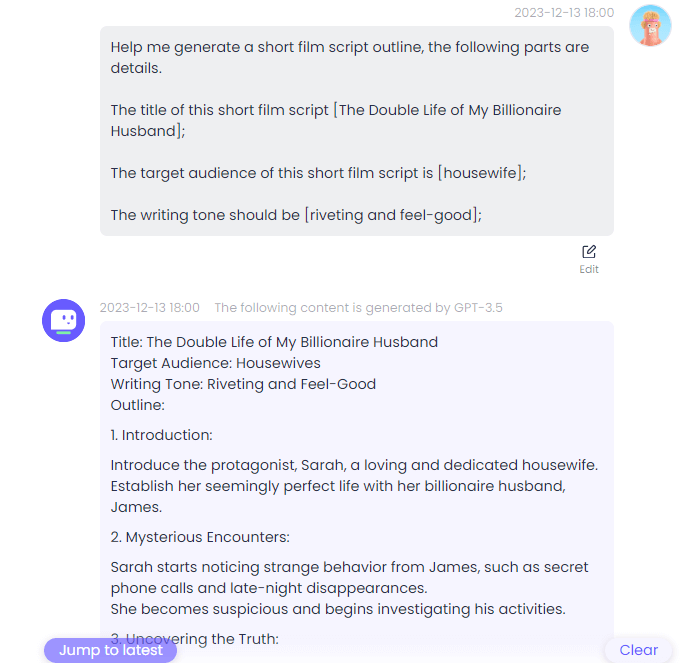
How to Generate Short Film Script Outline with ChatArt Pro
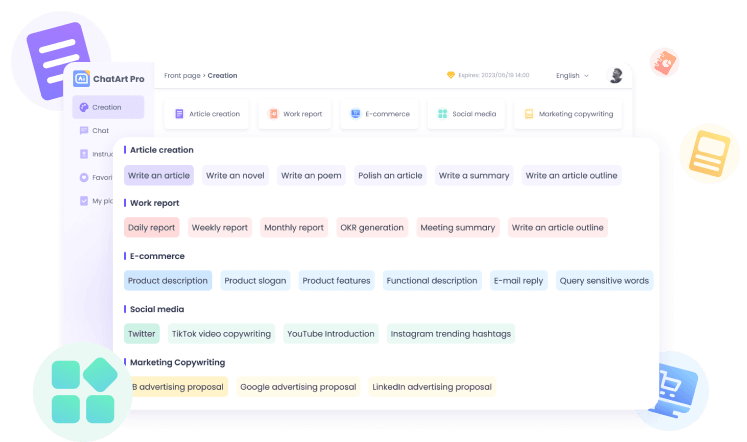
Free AI Tinder Bio Generator

Free Product Review Generator









 OpenAI series (including GPT-5 & 4.1)
OpenAI series (including GPT-5 & 4.1)
 Claude series (including Claude Sonnet 4.5 & 4)
Claude series (including Claude Sonnet 4.5 & 4)
 Gemini Series (including Gemini 2.0 Pro)
Gemini Series (including Gemini 2.0 Pro)
 DeepSeek Series (including DeepSeek R1)
DeepSeek Series (including DeepSeek R1)












